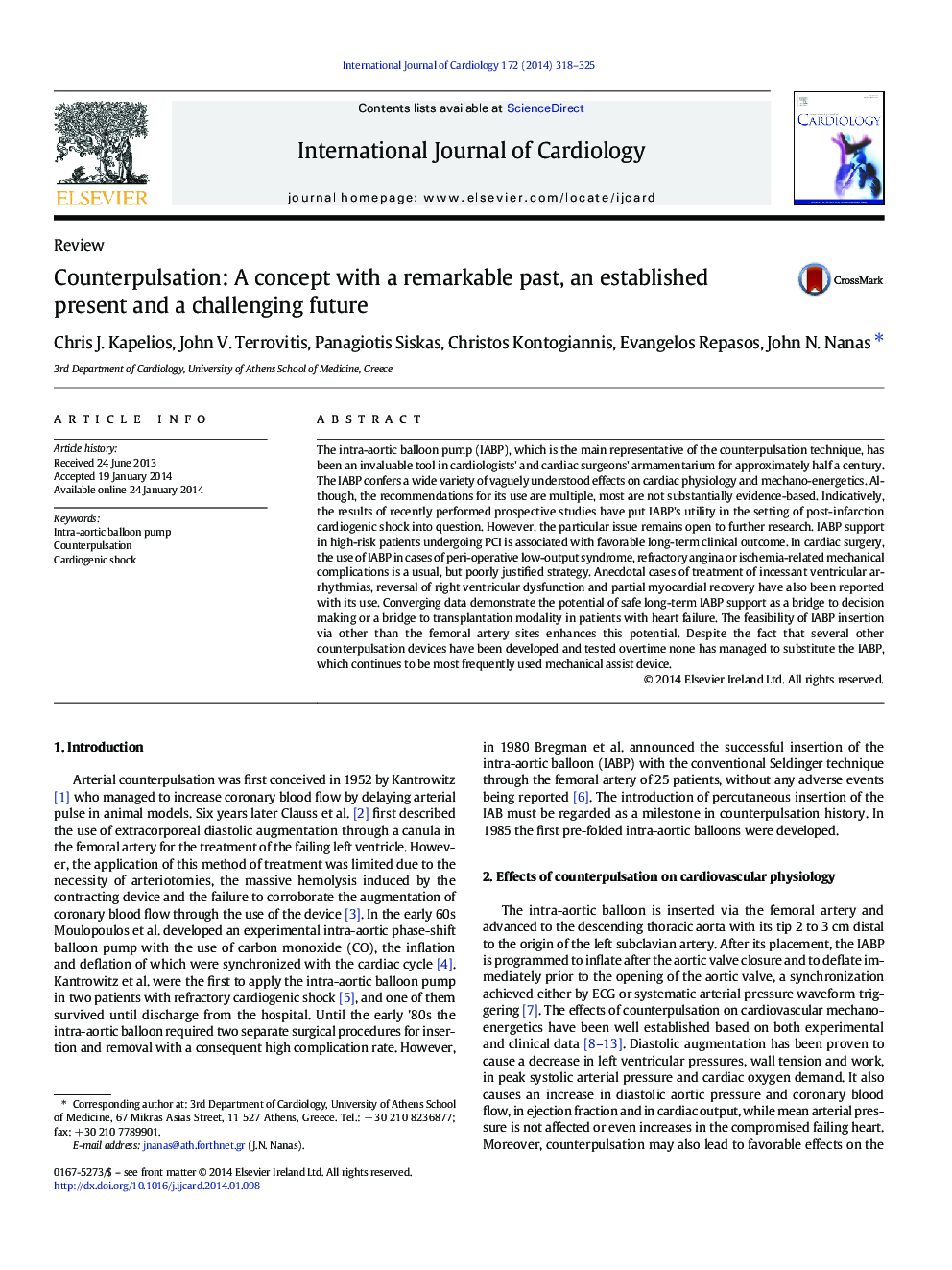| Article ID | Journal | Published Year | Pages | File Type |
|---|---|---|---|---|
| 5972011 | International Journal of Cardiology | 2014 | 8 Pages |
The intra-aortic balloon pump (IABP), which is the main representative of the counterpulsation technique, has been an invaluable tool in cardiologists' and cardiac surgeons' armamentarium for approximately half a century. The IABP confers a wide variety of vaguely understood effects on cardiac physiology and mechano-energetics. Although, the recommendations for its use are multiple, most are not substantially evidence-based. Indicatively, the results of recently performed prospective studies have put IABP's utility in the setting of post-infarction cardiogenic shock into question. However, the particular issue remains open to further research. IABP support in high-risk patients undergoing PCI is associated with favorable long-term clinical outcome. In cardiac surgery, the use of IABP in cases of peri-operative low-output syndrome, refractory angina or ischemia-related mechanical complications is a usual, but poorly justified strategy. Anecdotal cases of treatment of incessant ventricular arrhythmias, reversal of right ventricular dysfunction and partial myocardial recovery have also been reported with its use. Converging data demonstrate the potential of safe long-term IABP support as a bridge to decision making or a bridge to transplantation modality in patients with heart failure. The feasibility of IABP insertion via other than the femoral artery sites enhances this potential. Despite the fact that several other counterpulsation devices have been developed and tested overtime none has managed to substitute the IABP, which continues to be most frequently used mechanical assist device.
